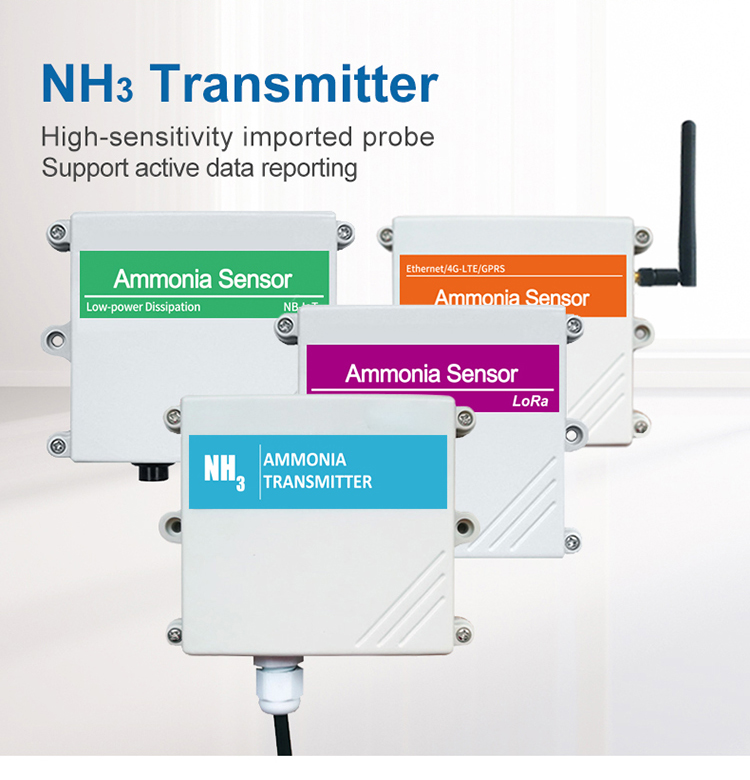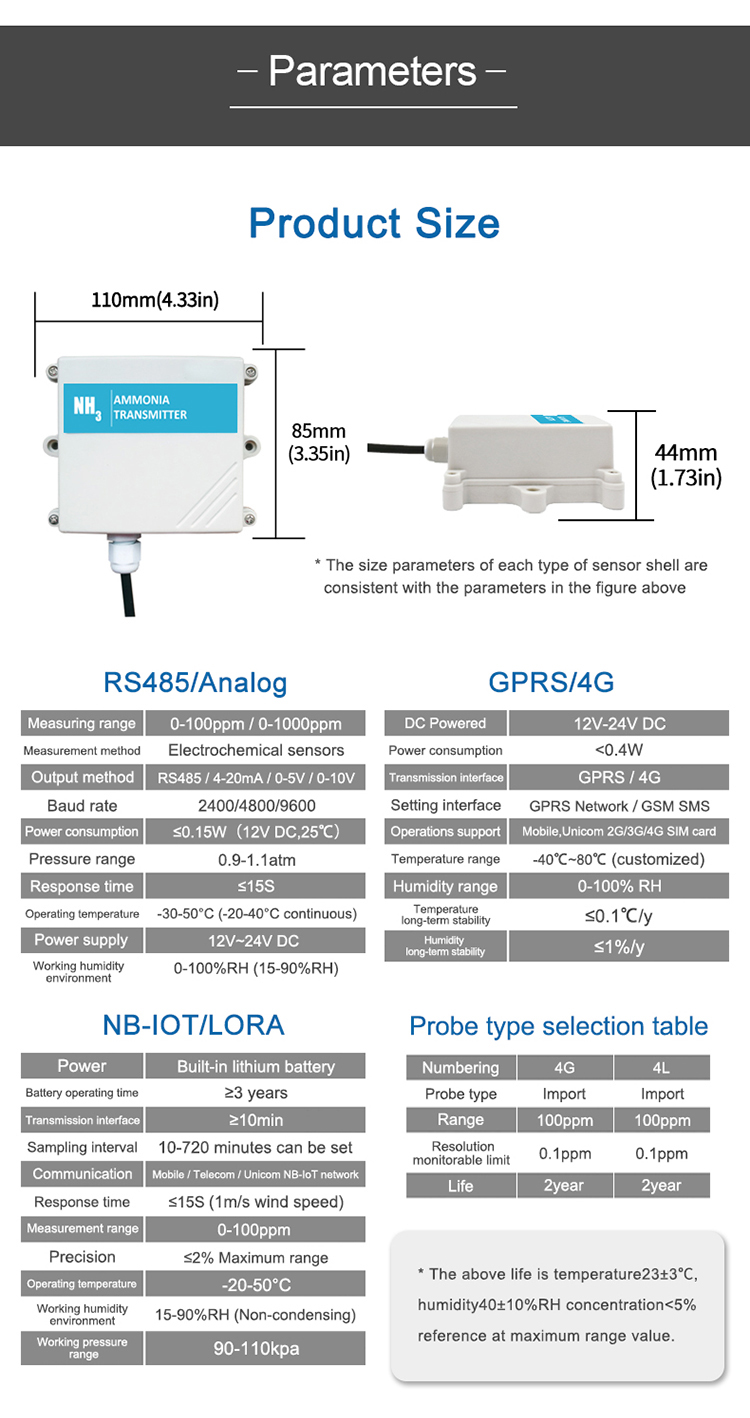Experts in Ammonia Sensor
Install ammonia sensors to warn and quantify ammonia releases. Gas monitors are usually placed near charging racks and storage areas. In the carburetor, injection section and other locations close to ammonia processing equipment, leakage probability is greater. Because ammonia is lighter than air, sensors are usually located in the breathing zone, four to six feet above the ground, or above a potential leak source. Sensor spacing is determined by the specific hazard location and subsequent risk to local personnel.

Ammonia sensors are available in a range of 0-50 PPM, 0-100 PPM, and 0-500 PPM. Some users prefer to use some 0-500 ppm sensors. Because a 300 ppm level is displayed, the emergency response team can choose appropriate clothing and respirators. We use LEL sensors typically in enclosed areas where there may be potentially large ammonia releases and concentrations close to LEL(15%).
Mounting configurations for the gas sensors include placing the sensor remote from the transmitter, or drawing a sample from a remote or inaccessible location. The latter must include a flow switch to indicate sample system integrity. A special calibration adapter is supplied for the remote sensor option, so that calibration functions can be performed from the transmitter location.

Electrochemical sensors must comply with temperature limits, otherwise their service life will be affected. Advanced organic ammonia sensor, functional range -20° to 50°C, but may fail at high humidity and temperatures. The heat shield protects the sensor from the radiant heat of flue work. We put the sample rendering hardware in a hot area.
Compliance with these issues is simplified by using a Sensidyne Controller to process the gas sensor inputs, provide annunciation and supervisory control. A 4-Channel System is illustrated below. Up to 16 gas sensors may be accommodated by one Controller.
Ammonia Gas Detection Sensors Mounting Configurations
Gas sensors are located in 4 to 6 feet above floor for gases similar in density to air, including Oxygen deficiency. For ammonia gas, which is a lighter gas than air, we must place the ammonia sensor within 12 inches of the ceiling . Heavier than air gases like solvent vapors should have the sensors placed within 12 inches of the floor .
When we configure a gas detection system, we should always determine the target gas density and potential leak sources.